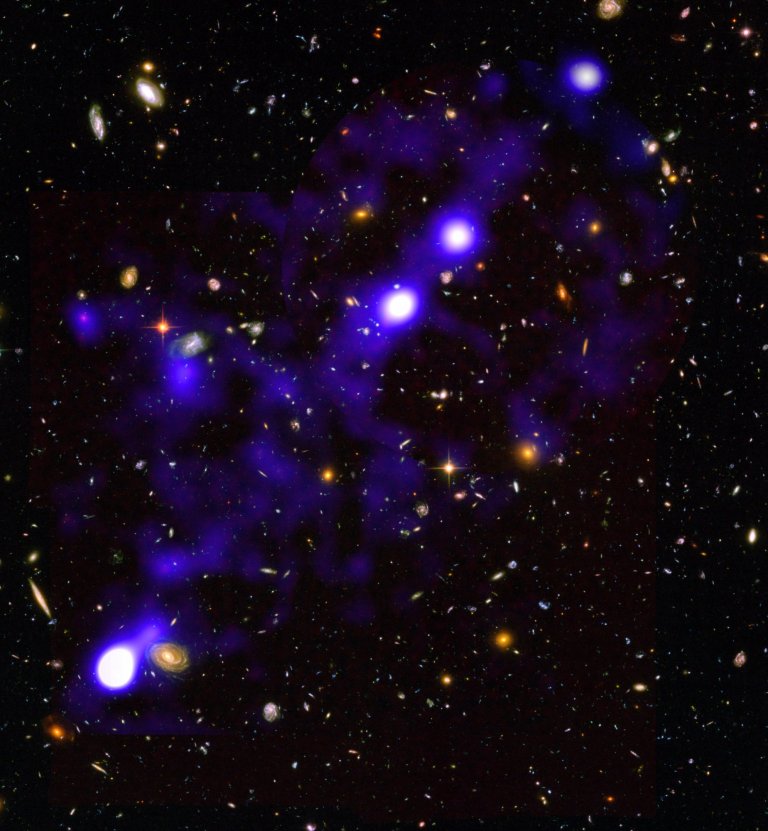
© Roland BACON / David MARY / CRAL / Lagrange / ESO / NASA / CNRS Images
View the mediaScientific news
In a study published today, conducted using the MUSE instrument, the first images of the cosmic web in which galaxies are born are finally revealed to us.

© Roland BACON / David MARY / CRAL / Lagrange / ESO / NASA / CNRS Images
View the mediaThe name is poetic, and the discovery fascinating, although the "cosmic web" made up of filaments of gas in which galaxies are born has long been predicted by major cosmological models (including the big bang model), until now we have never been able to directly observe it. This has now been achieved using the extraordinary MUSE instrument installed on ESO's Very Large Telescope in Chile, which has managed to capture the faint glow of the gas forming these filaments.
A holy grail which has now been attained by an international team led by Roland Bacon, a CNRS researcher at the Lyon Astrophysics Research Centre (CNRS / University of Lyon 1 / ENS of Lyon), the results are presented in a study published on Thursday 18 March in the journal Astronomy & Astrophysics. From these images of several filaments as they appeared one to two billion years after the big bang, a crucial period for understanding how galaxies form in this cosmic web, we can assume the existence of many previously undiscovered dwarf galaxies. To accomplish this, the team took the bold step of pointing ESO's Very Large Telescope equipped with the MUSE instrument and the telescope's adaptive optics system, at a single region of the sky for over 140 hours. Together, these instruments form one of the most powerful systems in the world, capable of revealing objects that even Hubble space telescope could not capture.
Our photo and video reports tell the story of the development and deployment of this extraordinary instrument, as well as a profile of its designer, Roland Bacon.
Our work is guided by the way scientists question the world around them and we translate their research into images to help people to understand the world better and to awaken their curiosity and wonderment.